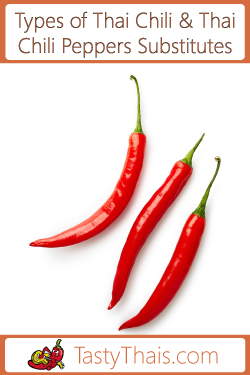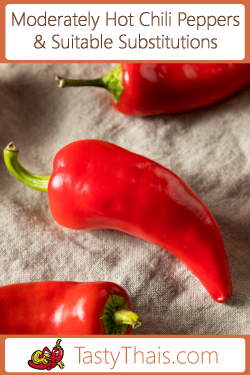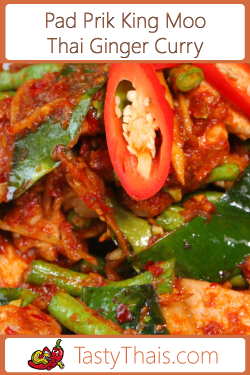Cooking with chili peppers is part and parcel of cooking Thai food but chilies are also used extensively in recipes from many other regions. There are thousands of regional varieties of chili, each with their own individual heal levels and different names which can be super confusing.
The biggest problem is choosing a chili with a similar heat profile to the one specified in the recipe. Particularly if the recipe is for a particular regional dish where the chili used may not be available in your location.
Thankfully, you can usually find a locally available chili which you can substitute instead. You will find detailed information on the following pages about the various chili types, heat levels, and substitutes.
Taste of Chili – What Does Chili Taste Like
Chilis do have a taste, some are sweeter than others, some have a smokey taste and others are somewhat more bitter. Some are eaten raw such as Bell Peppers and others are used to make a dish spicy like Bird’s Eye Chilies. The taste though is separate from the spiciness.
Many people refer to the taste of chili, meaning how spicy it is. But spiciness is not actually a taste. The feeling of heat from chili is a reaction from the nerves in your mouth sending a warning to your brain that you are eating something spicy to avoid your stomach having to deal with something nasty.
The spiciness of chili comes from a chemical called capsaicin which is contained in the oils of chili pepper. When capsaicin hits your mouth, the nerves inside send a pain message to your brain but this is not a taste – rather a pain response.
Once you understand this point you can get a better handle on controlling the spiciness of your cooking. You will also be able to assess whether substituting a different type of chili will greatly affect the taste of a recipe or hardly affect it at all.
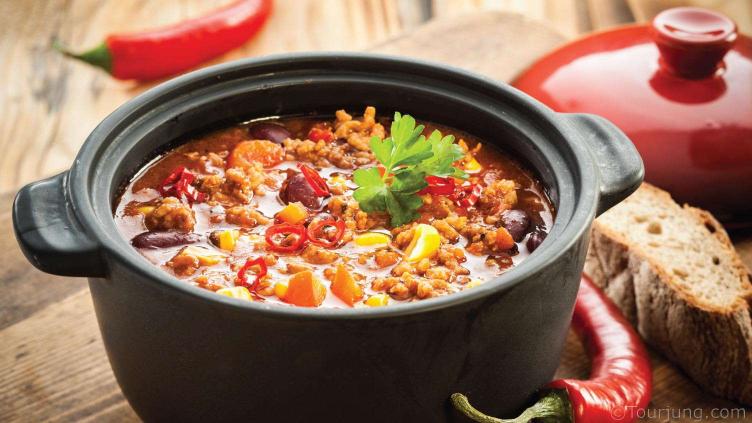
Measuring the Chili Spiciness
Before we get into the basic science of measuring spiciness, you should understand that your perception of spiciness will depend to a great extent on how used you are to eating chili and other spicy food.
If you regularly eat chili then your perception may be that a certain recipe is moderately spiced. Another person, who has rarely, if ever eaten spicy food, tasting the same dish may consider it super spicy.
In other words, a person’s perception of spiciness is a subjective one.
From the scientific viewpoint, once it was understood that capsaicin and capsaicinoids were responsible for the reaction of spice in and on your body, it was a relatively simple task to go about measuring and comparing the levels of capsaicin in various different chilis.
A fellow called Scoville came up with the measurement method and so we have the Scoville Heat Unit Scale. This scale is used to measure how much capsaicin is in a particular variety of chili – or more precisely the range of spiciness of a given variety.
Just as people perceive spiciness according to their history of eating chili, chilies themselves can be more or less spicy within the same variety – just like humans from the same family can be shorter or taller, fatter or thinner.
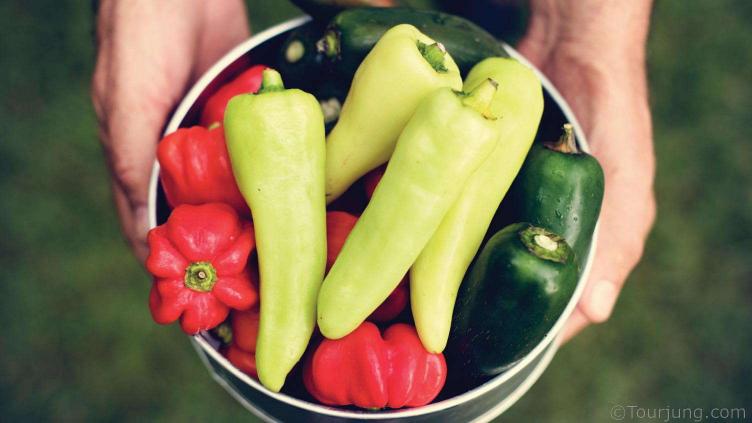
Tips on Substituting Chilies
As mentioned in the introduction, often you will be cooking up a recipe for a dish that is common to a different region than where you live. What chili that YOU can find will be a good match for that recipe?
This blog is about Thai food and the chili pepper recipes are moderated to be an average level of spiciness that you might expect to find if you ordered a dish at an average Thai restaurant in Thailand.
For some people, the level of spice will be too high and for others maybe just right and yet others not spicy enough.
Some recipes are just meant to be spicier than others. Pad Prik King, for instance, is a hot, dry, spicy curry from Southern Thailand whereas Panang Curry is a spicy, but intentionally less spicy, wetter curry in comparison.
If you are going to match the recipe and avoid a spicy hell from using the wrong type of chili, then substitution is going to have to be made.
Just to make things even more complicated, the chilis that we find and use in Thailand are typically not identical to the chilis you might find locally, even though they may look somewhat similar.
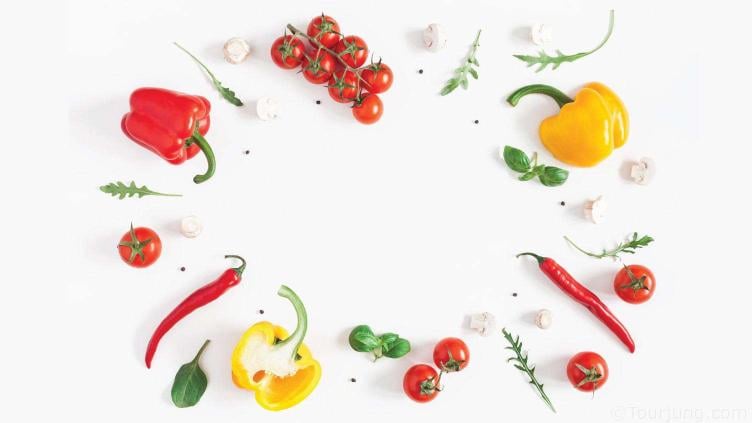
In order to cut through this confusion, we thought it a good idea to list out the most common chilis used for cooking around the world. Follow the links below to get an idea of how spicy they are and so let you compare the Thai chili with a local chili variety that will give about the same level of spice.
Types of Thai Chilies and Substitutes (with infographic)
All Popular Mild Types of Chili and Substitutes
All Popular Moderate Types of Chili & Substitutes
All Popular Hot Types of Chili & Their Substitutes
You cannot completely discard the taste because some dishes do feature the taste of the particular type of chili used. These will use specific chilis such as Piri Piri, or Peri-Peri if you prefer, tabasco, cayenne pepper or some smoked version with a, particularly strong taste.
You will have to make a judgment on whether substituting with a chili variety with a different taste will negatively affect the taste of the finished dish. That will depend on the strength of taste of the other ingredients as well as how much chili is needed for the spiciness you want.
If that sounds a bit complicated just think of it like this. If you have a recipe with multiple strong tasting ingredients with a small amount of chili then whichever chili you use should not affect the taste too much. Obviously it may dramatically affect spiciness if you use a very spicy chili.
But, if you have a recipe with just a couple of milder tasting ingredients which includes chili then the taste is likely to be much more affected by the chili type – so choose carefully.
It will be clear in the recipe anyway and these types of ingredients are usually in dried or liquid form and readily available
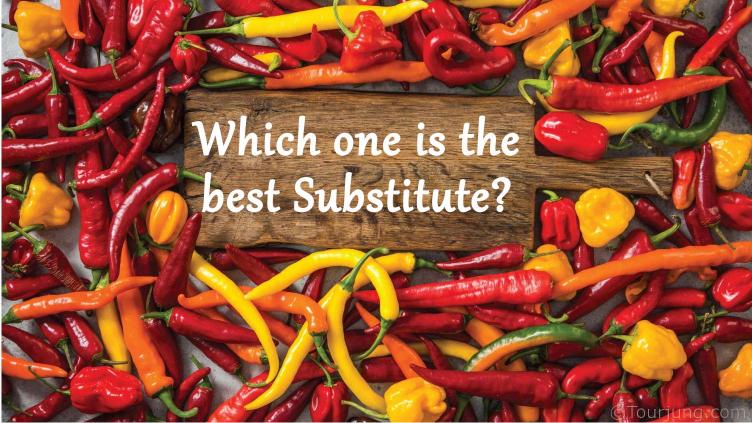
A Very Brief Historical Overview of the Chili
Chili pepper is part of the Capsicum group fo plants with hundreds, if not thousands, of varieties.
The plant is native to South America and was brought across the world to Asia and Africa where the climates were conducive to growing the plant.
Before arriving in the far east, most heat spiciness came from peppercorns which are still used today. Black Peppercorns, fresh green peppercorns, white peppercorns and in China Schechuan peppercorns were used to make dishes taste ‘hot’.
With the arrival of chili, the people in the region took up this type of pepper and incorporated it into pastes and the dishes that have become, what is known the world over, like Thai food.
Thai recipes are far from the only foods that use chili. Bolivian, Mexican, and other South American cuisines, as well as African and Portuguese dishes, all feature the spice prominently in their dishes.
As the plant has spread to be grown locally in various regions, it has developed into varieties specific to the regions. There are even varieties specific to small areas such as Prik Suan Suphan – a small and very spicy chili grown in the Suphanburi district of Thailand.
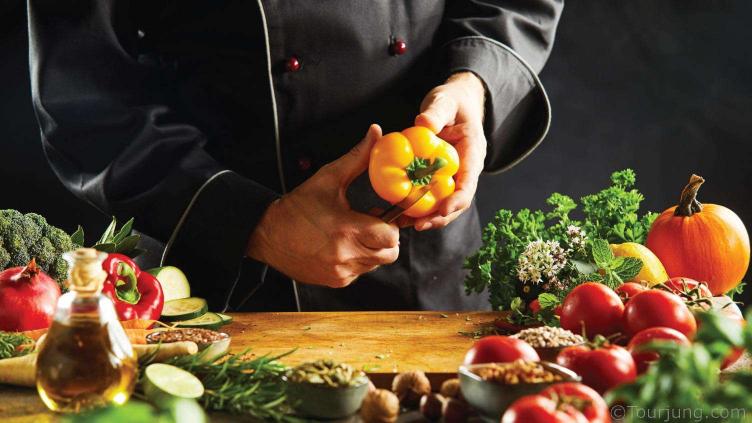
Cooking with Chili Peppers – Controlling Spiciness
There are a few things to know about cooking with chili peppers from a practical perspective.
Aside from any taste they may lend to a dish, the level of heat spiciness they add is going to be the main consideration.
Capsaicin is responsible for the level of heat the chilies give to a dish. Controlling the amount of capsaicin is a function of the type of chili used (hotter chilis contain more of the substance), the number of chilis used and the preparation. Find out what happens to if you consume too much capsaicin.
Capsaicin is held in the flesh of the chili but also in the pithy part, which is called the placenta and holds the seeds, and much more in the seeds. So trimming out the seeds and pith will remove a fair amount of capsaicin before you start cooking and so reduce the spiciness of a dish, assuming the same number of chilis are used.
You can mix or match how you control spiciness by using a less spicy chili variety, using less or more chilis in a dish or by removing seeds and pith before use. Choose your poison!
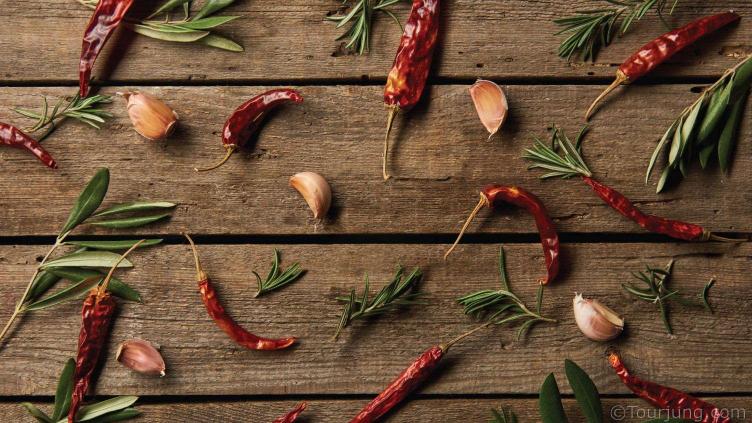
Are Fresh Chilies Hotter than Dried Chiles?
This is an interesting question and the answer is ‘it depends’. If we are talking about chili flakes then dried chili flakes are mostly hotter than fresh chili because the capsaicin that causes the spicy heat is more concentrated. Fresh chili can be seen more easily and set aside as well.
But, if the fresh chilies are deseeded and the white membranes removed, then they will be less spicy usually because dried chilies are typically left to ripen which for some varieties means they get hotter. But some varieties of chili get milder as they ripen so it is not a rigid rule.
Often dried chili is used whole or in slices, and most people will not eat that so the chili heat is dispersed in the dish. On the other hand, fresh chili has more water content which can help distribute the capsaicin and thus the heat in your mouth.
To further complicate things, some chili varieties have the distinction of heat lasting longer in the mouth than others.
Cooking with Chili Peppers Conclusions
If you are going to cook with chili peppers then understanding the ways to tame the spice level of hot chili to a more moderate level will help avoid the disaster of a finished meal that is too hot for your guests to eat.
Paying attention to the type of dish and its origin, the general view of the spiciness of the dish and how you might want to adjust the level of heat is the first step to your control.
If you are cooking regional dishes then understand that you may not be able to find the exact type of chili referred to in the recipe (or the type of chili generally used wherever the dish originates), and picking an appropriate substitute becomes a necessary skill.
Start mild and work your way up to more highly spiced dishes over time as taste frequently adding more spice as necessary. You can’t easily take spiciness out of a dish once it is in there!
